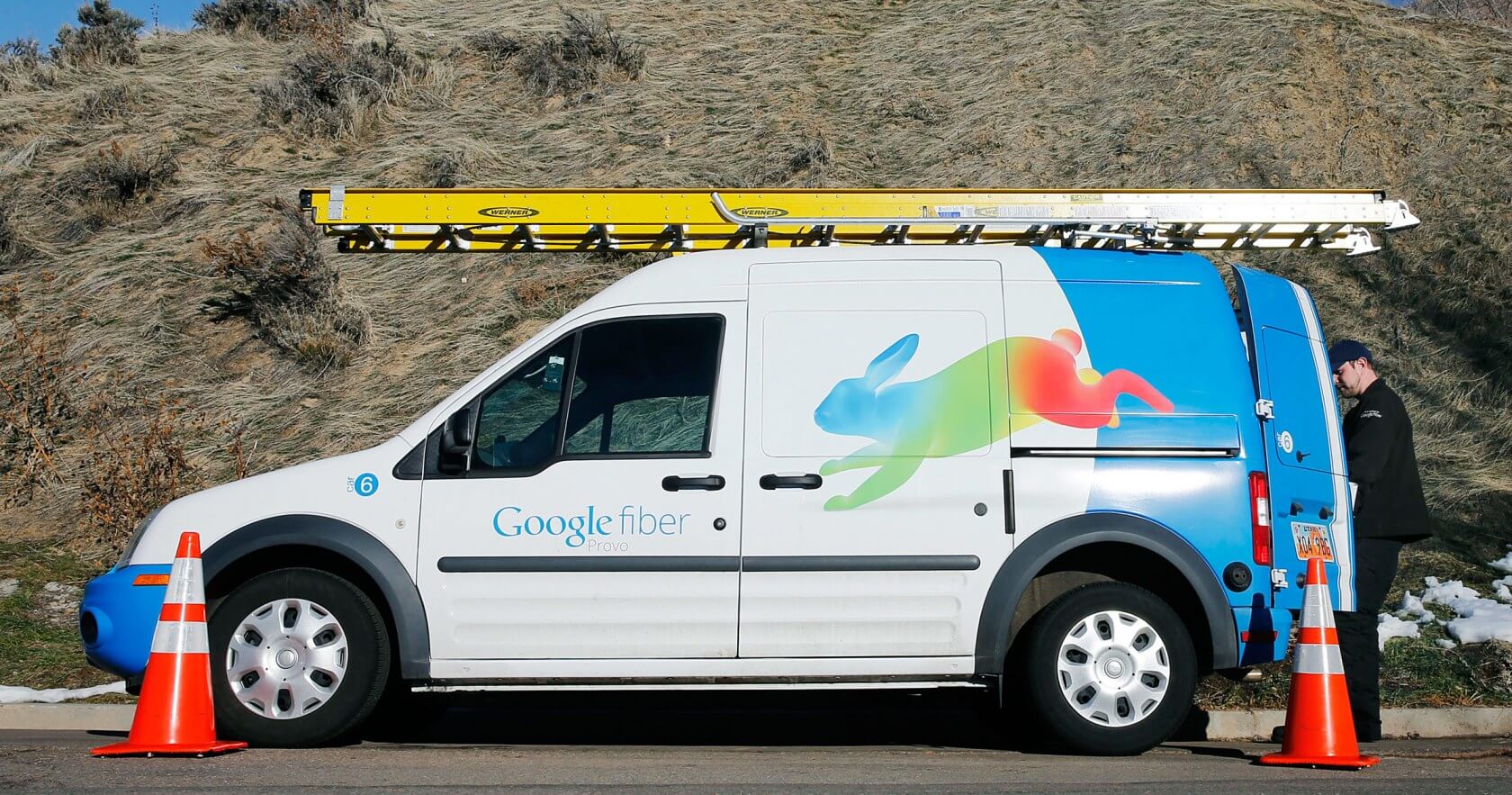Google Fiber drops 100Mb/s; Goes ‘All In’ on 1 Gig Internet Access
Google’s affordable, high-speed Fiber internet service has been around for quite some time, but only in select areas of the U.S. As it continues its very slow expansion to more cities and regions, Google is looking to streamline its operations by eliminating one of its only two Fiber based Internet access subscription plans. Google Fiber is dropping its $50/month, 100Mb/s subscription for NEW CUSTOMERS. 100Mb/s FTTP has always been a slightly cheaper alternative to its 1 Gigabit plan, which is only $20 more at $70/month.
“Starting today, we’re recommitting to our roots. We’re going all in on a gig, just like we did all those years ago. We will no longer offer a 100Mbps plan to new customers,” Google said in a blog post. “We are excited to turn our attention back to our gig service, still offered for $70/month—the exact same price it cost back in 2012 when we first launched,” Google added.

Currently, the Fiber service is available in 18 U.S. cities: Atlanta, Georgia; Austin, Texas; Charlotte, North Carolina; Chicago, Illinois; Denver, Colorado; Huntsville, Alabama; Kansas City, Missouri; Miami, Florida; Nashville, Tennessee; Oakland, California; Orange County, California; Provo, Utah; San Antonio, Texas; San Diego, California; San Francisco, California; Salt Lake City, Utah; Seattle, Washington; and The Triangle, North Carolina.. Even in Fiber-connected cities, not every geographic area within the city will have access to the 1 Gig service.
“With increasingly connected homes and ever-improving technologies, speed is more important than any time in our history—and becoming more important every day. And with our fiber networks, we’re uniquely positioned to deliver it,” Google said. “You won’t have any data caps to interrupt even the most impressive binge-watching session. And with the power of a gig, you’re able to use all your connected devices at home at the same time,” the company added.
If Google Fiber sounds like the internet plan for you, please visit the Google units official website to check if your location is supported.
………………………………………………………………………………………………………………………………………………………………………………………………………….
In its seven-year lifespan, Google Fiber has never had a single price increase. Its straightforward, month-to-month (cancel any time) payment model has always been more attractive than what many competing services offer (many require a one year contract with huge cancellation fee).
Google Fiber’s ambitions are a lot more modest than they used to be. So the news applies to a pretty small percentage of Americans. Fiber scaled back its roll-outs in the mid-2000’s and had to pull out of Louisville, Kentucky earlier this year, following problems with its cable installations beneath the city’s roads. Google put the brakes on most of its expansion efforts, like in the author’s home town – Santa Clara, CA. Apparently, there were just too many hurdles, including the cost of expanding into certain areas, getting permission from the city councils, disputes over access to utility poles, and other challenges.
References:
3 thoughts on “Google Fiber drops 100Mb/s; Goes ‘All In’ on 1 Gig Internet Access”
Comments are closed.



Google broadband is available in 18 metro areas, partly thanks to the company’s 2016 acquisition of Webpass, which offers high-speed wireless home Internet. Webpass charges $60 a month (or just $45.83 a month with a one-year contract) for speeds that vary by location, ranging from 100Mbps to 1Gbps.
Google’s Webpass metro areas are Chicago, Denver, Miami, Oakland, San Diego, San Francisco, and Seattle. The fiber areas are Atlanta; Charlotte; Kansas City; Nashville; Orange County, California; San Antonio; Austin; Huntsville; Provo; Salt Lake City; and The Triangle, North Carolina. The service’s availability is limited in each city, though.
https://arstechnica.com/information-technology/2019/12/google-fiber-ends-50-100mbps-plan-but-1gbps-is-still-70-with-no-data-cap/
In some ways, they are going back to the future, as when they launched they had a 5 Mbs tier that was “free” for 7 years (after paying an upfront fee of $300) and then 2 different 1-gigabit options (one plain and one bundled with TV), as seen in this article which you helped me with, Alan.
https://viodi.com/2013/04/03/google-fiber-a-step-function-connectivity-improvement/
Oh my gosh, in looking at the comments below that article, I just noticed a 2008 paper from Tim Wu and a Google’s Derek Slater that referenced the idea of people owning the fiber, similar to a condo model
https://www.newamerica.org/oti/policy-papers/homes-with-tails/
In 2015, I wrote a similar paper, which I thought was an original thought. It actually complements what Wu and Slater wrote, but they clearly had the idea before I did. Anyway, I wish someone would take the condo idea seriously as a way to more efficiently get fiber to rural America.
https://viodi.com/2015/11/25/property-assessed-broadband-a-bottoms-up-way-to-build-community-broadband/
I’m very disappointed Google Fiber won’t be coming to Santa Clara, CA, where AT&T and Comcast have a monopoly on triple play services. If you don’t want pay TV, you can get high speed wireless Internet access from a number of providers, including SAIL